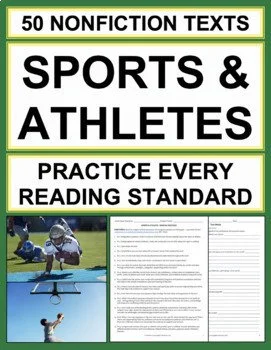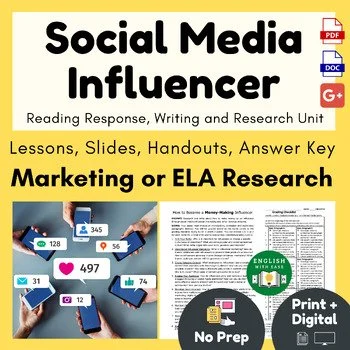Applying "How to Win Friends and Influence People" To Parenting and Teaching
"How to Win Friends and Influence People" by Dale Carnegie is a self-help book that provides practical advice on how to improve interpersonal relationships and communication skills. Here are some key principles from the book along with specific examples of how adults can apply the principles when speaking to children.
Want free virtual library story times, read along videos and instructional videos to teach early phonics and math skills?
Here are some key principles from the book, "How to Win Friends and Influence People" by Dale Carnegie, along with specific examples of what parents and teachers could say to their children and students in different situations to foster positive communication and de-escalate conflict.
1. Show genuine interest in others:
Parent-Child Calm Moment: "I'm really curious to hear about your day. What was the most interesting thing that happened?"
Parent-Child De-escalating Conflict: "I'm here because I care about you. I want to understand why you're feeling this way. Let's talk about it."
Teacher-Student Calm Moment: "I'm really curious to hear about your thoughts on the last lesson. What did you find most interesting or challenging?"
Teacher-Student De-escalating Conflict: "I can see that you're upset. I genuinely want to understand your perspective. Can you tell me what happened?"
2. Give honest and sincere appreciation:
Parent-Child Calm Moment: "I'm so proud of the effort you put into your project. Your hard work really shows."
Parent-Child De-escalating Conflict: "I appreciate your honesty in sharing your feelings. It takes courage to express yourself."
Teacher-Student Calm Moment: "I appreciate the dedication you showed in your group project. Your teamwork really made a difference."
Teacher-Student De-escalating Conflict: "I'm proud of you for talking to me about your concerns. It shows maturity and trust."
3. Arouse in the other person an eager want:
Parent-Child Calm Moment: "If you finish your homework early, you'll have more time to play your favorite game."
Parent-Child De-escalating Conflict: "I understand you want more freedom. Let's work together to find a compromise that ensures your safety and gives you some independence."
Teacher-Student Calm Moment: "If you complete your assignments on time, you'll have the opportunity to choose a topic you're passionate about for our next project."
Teacher-Student De-escalating Conflict: "I know you want to be treated with respect, and I want that too. How can we communicate better to avoid misunderstandings?"
4. Become genuinely interested in others:
Parent-Child Calm Moment: "Tell me more about your hobbies. I'd love to know why you enjoy them so much."
Parent-Child De-escalating Conflict: "I'm interested in your perspective. Can you share more about why you feel this way? I want to understand your point of view."
Teacher-Student Calm Moment: "I'd love to know more about your hobbies outside of school. What do you enjoy doing in your free time?"
Teacher-Student De-escalating Conflict: "I'm genuinely interested in what you have to say. Your feelings are important to me. Please tell me more about how you're feeling."
5. Smile:
Parent-Child Calm Moment: Greet your child with a warm smile when they come home from Schoo. Start every day with a loving, positiver ritual. Yay! You’re awake! I am so lucky to get to start every day with you!
Parent-Child De-escalating Conflict: Start the conversation with a smile, creating a positive atmosphere for discussing the issue.
Teacher-Student Calm Moment: Greet your students with a warm smile when they enter the classroom each day.
Teacher-Student De-escalating Conflict: Start the conversation with a smile, creating a positive atmosphere for discussing the issue. Always assume the best and act as if you’re approaching any “bad” behavior as if it is your very best student having a bad day.
6. Remember that a person's name is to that person the sweetest sound:
Parent-Child Calm Moment: "Great job on the soccer field, Alex! You really helped your team."
Parent-Child De-escalating Conflict: "I understand, [Child's Name]. I see that this situation is upsetting for you. Let's find a way to work it out together."
Teacher-Student Calm Moment: "Well done in the science competition, Emily! Your presentation was outstanding, and you made us all proud."
Teacher-Student De-escalating Conflict: "I hear you, [Student's Name]. It sounds like you're feeling frustrated. Let's talk about what's bothering you."
7. Be a good listener and encourage others to talk about themselves:
Parent-Child Calm Moment: "I'm all ears. What was the most exciting part of your day?"
Parent-Child De-escalating Conflict: "I'm here to listen. Tell me what's on your mind, and I promise I'll hear you out without interrupting."
Teacher-Student Calm Moment: "I'm here to listen. What topics are you most interested in exploring further in our upcoming lessons?"
Teacher-Student De-escalating Conflict: "I want to listen to your side of the story. Please take your time and share your thoughts and feelings."
8. Talk in terms of the other person's interests:
Parent-Child Calm Moment: "Since you love painting, how about we spend some quiet time together this weekend converting part of your room into a mini artist’s studio? That we all your art stuff can be in one spot, ready to use, instead of stored in hard-to-reach boxes.
Parent-Child De-escalating Conflict: "I understand you value your privacy. I want to respect that. Let's discuss boundaries that work for both of us so we can avoid misunderstandings in the future."
Teacher-Student Calm Moment: "I want everyone to fill out this survey with topics they are genuinely interested in reading about. For the rest of the year, every nonfiction text we read will be about your chosen topics. Whether you want to read more about famous athletes, rappers, super heroes, video games or conspiracy theories or you want to learn about how to become a millionaire through lucrative side hustles or how to become a famous influencer, I want you to know the purpose of reading, writing and research is to learn about the things that interest you!”
Teacher-Student De-escalating Conflict: "I appreciate your dedication to athletics. Balancing them with your studies is important. Let's work together to create a schedule that allows you to pursue sports while also ensuring your academic success."
9. Make the other person feel important, and do it sincerely:
Parent-Child Calm Moment: "Your opinion matters to me. What do you think we should do this weekend?"
Parent-Child De-escalating Conflict: "You are important to me, and I value our relationship. Let's find a solution together that makes both of us feel heard and respected."
Teacher-Student Calm Moment: "Your insights are valuable to our class discussions. What do you think about sharing your perspective with the class during our next debate?"
Teacher-Student De-escalating Conflict: "Your feelings and opinions matter to me. I want to work with you to find a resolution that respects your concerns."
10. Avoid arguments and show respect for others' opinions:
Parent-Child Calm Moment: "I understand you have a different perspective. Let's talk about both sides and find a solution together."
Parent-Child De-escalating Conflict: "I respect your perspective, and I hope you can respect mine. Let's focus on finding common ground and resolving this peacefully."
Teacher-Student Calm Moment: "I respect your viewpoint. Let's have an open discussion about the topic, considering different perspectives to broaden our understanding."
Teacher-Student De-escalating Conflict: "I understand you have your point of view. I have mine too. Let's talk about how we can understand each other better and find a solution."
11. Admit your mistakes and avoid criticism:
Parent-Child Calm Moment: "I realize I was wrong to raise my voice. I should have listened better. I'm sorry."
Parent-Child De-escalating Conflict: "I realize I may have misunderstood your situation. I'm sorry if my actions contributed to this conflict. Let's work together to make things right."
Teacher-Student Calm Moment: "I realize I made a mistake in explaining that concept. Thank you for pointing it out. Let's work through it together, and I appreciate your patience."
Teacher-Student De-escalating Conflict: "I'm sorry if I upset you. I could have handled the situation better. I'm here to listen and learn from this experience."
12. Begin in a friendly way:
Parent-Child Calm Moment: "Hey, I'd love to hear about your day. Should we grab a snack at the table or on a picnic blanket outside?"
Parent-Child De-escalating Conflict: "I love you, and our relationship is important to me. Let's approach this conversation with love and understanding. We can work through this together."
Teacher-Student Calm Moment: "Hello! I'm excited to dive into today's lesson. Before we start, does anyone have any questions or topics they'd like to discuss?"
Teacher-Student De-escalating Conflict: "I want us to resolve this in a positive way. Let's start fresh and find a solution together. What do you think we can do to make things better?"
13. Let the other person feel that the idea is theirs:
Parent-Child Calm Moment: "You came up with a brilliant solution for sharing toys. How did you come up with that idea?"
Parent-Child De-escalating Conflict: "I trust your judgment. How do you think we can resolve this conflict and make sure it doesn't happen again? Your input is valuable to me."
Teacher-Student Calm Moment: "Your suggestion about incorporating real-world examples into our math problems is excellent. How about you lead the class in solving one today and explain your approach?"
Teacher-Student De-escalating Conflict: "It seems like you have some ideas on how to improve this situation. I'm interested in hearing your suggestions and working on them together."
Remember, the book's principles are about fostering positive relationships through effective communication and genuine interactions. Tailor these examples to every child's age, personality, and the specific context to ensure they resonate and contribute to a healthy parent-child or student-teacher relationship.
Bonus Tool: Read Aloud Emotional Regulation Picture Books
Remember that children behave when they can. This means that like walking, talking, swimming and shape sorting, emotional regulation is a skill that needs to be modeled, explicitly taught, practiced and mastered. We like to think that some children and adults have “anger problems” when in reality some individual have masted emotional regulation skills while others have not. Teaching self-regulation can seem difficult, but my line of emotional intelligence children’s books make emotional regulation skills simple and accessible to even the young guest children from two years old and up. Buy the ebooks for as little as $2 or preview them for free on my YouTube channel.
Applying "How to Win Friends and Influence People" to parenting and teaching can improve your daily interactions with your kids and help build their long-term sense of self-worth and self-esteem as you show them genuine, interest, respect and appreciation for who they are as a person. Remember, the key is to be genuine, respectful, and considerate to the feelings and interests of everyone, including your children or students.
























